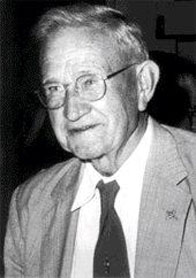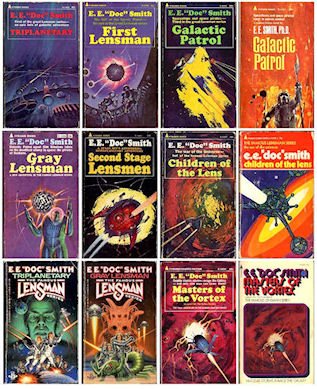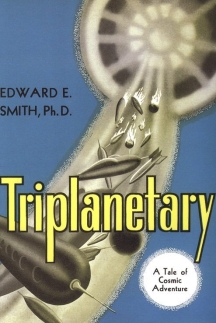
The Great Depression hit the United States after the October, 1929 stock market crash, and it lasted through virtually the entire decade of the 1930’s; indeed, it is widely held that it was the entry into World War II, in 1941, that signaled the end of the world-wide economic downturn.
Although the United States economy did show signs of slow recovery after 1933, the unemployment rate did not drop below 15% until the United States entered the war. It was tough times for most of the country, and the world. This was a period where people looked for momentary escape from their troubles; their entertainment was slapstick, larger-than-life, the fantastic.
This was the period of “pulp fiction,” so named from the cheap newsprint used to publish the forgettable, quickly-written, lurid tomes that took the reader away from the darkness of every-day life, if only for a few moments. And science fiction was a major player in that escape. Where better to go than trackless, limitless outer space, to battle strange and mysterious monsters on alien planets – or fight off alien invasions – to get away from the uncertainty of real life? This era was the genesis of Flash Gordon, Buck Rogers, and Superman.
This is where E.E. “Doc” Smith pioneered, and excelled.
Edward Elmer Smith, Ph.D. was born on 2 May, 1890 in Sheboygan, Wisconsin. It should be noted that he really was a doctor; his Ph.D. was in food chemistry. Doc Smith not only served humanity by writing what was to become classic science fiction, he was the researcher – and hero to many – who finally figured out how to get powdered sugar to stick to donuts.
But he is best known for writing golden-era science fiction.
Doc Smith published novels from the early 1930’s until his death in 1965. His most memorable work includes the Skylark series (1946-1966), but he is best known as the author of one of the most timeless and lasting universes in science fiction history: The Lensmen, which began with Triplanetary in 1934 and continued through Children of the Lens (1954) and Masters of the Vortex (a series of short side-stories in the same universe compiled into novel form, first published as Vortex Blaster) in 1960.
The Lensmen series has been reprinted multiple times; these are just a few of the covers used in the various editions:



The Lensmen books tell a grand tale of humanity’s expansion to the stars, and our discovery that the galaxy is full of life; much of it human to some extent, some of it decidedly not. But this is also a classic story of good vs. evil.
It begins in the immeasurably distant past – two galaxies coalesce, forming innumerable planets and endless possibilities for life. But, already, there are two ancient races existing in this universe. The Arisians, beings of immense mental capabilities, their lives already measured in the thousands and millions of years as the infant Earth would come to measure them. They are beings of such mental power that no physical means could bring about their demise; indeed, they are free of the “chance formation of planets” to sustain their lives. The Arisians have developed the “science of the mind” to such an extent they can predict, with certainty, events thousands and millions of years in the future.
The other race, the Eddorians, are not of this universe. Rather, they are from another plenum entirely, coming to our universe because it alone had the potential for widespread life, and in their insatiable lust for power they needed two island galaxies teeming with humanity to control, to dominate. Of nearly equal mental power as the Arisians – physical means could not, actually, destroy them – they are the ultimate despots, materialistic and mechanistic, as malevolent as the Arisians are benevolent, preferring engines of destruction and torture to pure thought.
The Arisians secretly help guide the development of Civilization, of which the Tellurian human race would become a key component. At the proper moment, they provide Civilization with the Lens, the tool by which Civilization might win the ultimate battle.
And over generations and millennia, the battles are fought, in space and on strange planets, and on Earth. But never do the Arisians let humanity know their true nature, or even knowledge of the Eddorians, since such knowledge would stunt their development into the Guardians of Civilization.
In the Lensmen books, E.E. “Doc” Smith wrote the very first “space opera.”
Now, it must be said that modern readers might find the writing to be dated, perhaps even clichéd. The technology remained stuck in the 1930’s, as did the slang and idiom used in conversation. Nor, in the books that followed “Triplanatary,” was there any significant change; power was supplied through ever-larger busbars of copper and silver, radios and “ultra-wave” communicators used vacuum tubes, loop antennae, and vernier scales, and engineers relied on slide rules for calculations. The one concession Smith makes to language changing over the generations was substituting “QX” for “OK.”
And yet, for an honest appraisal of this work, it must be remembered that such things are part and parcel of “space opera.” What it lacks in sophistication it makes up for in enthusiasm; it doesn’t ask the reader to make great leaps, it uses the familiar to allow the reader to more easily suspend disbelief and make the story more enjoyable. Keep in mind these books were written for audiences born before World War II. As the genre matured and we, the readers, became more familiar with it, more extrapolation and technological vision gave rise to Warp Drive, wormholes, and cell phones.
It must also be remembered that Smith invented the “space opera,” and it didn’t become cliché until other, less visionary writers grabbed the formula and ran with it. It’s like the old joke about the woman who was asked what she thought of Shakespeare’s writing: she said she wasn’t impressed because he only strung together famous quotes. So it is with “Doc” Smith.
Hollywood has been trying to make The Lensmen into a movie for years; as this is written, all the attempts have so far been in vain. There was a Japanese animated production allegedly based on the books, but it bore little if any resemblance to Smith’s work.
E.E. “Doc” Smith died in Seaside, Oregon on 31 August, 1965. Although he had said he had material for a follow-up to tie up the loose ends left by Children of the Lens, and he shared his final Lensmen story in conversation with his friend and contemporary Robert Heinlein, no notes or manuscripts were ever found.
Written by John Pickard
E.E. Smith Bibliography
Lensmen
Triplanetary (1934)
First Lensman (1950)
Galactic Patrol (1950)
Second Stage Lensman (1953)
Children of the Lens (1954)
The Vortex Blaster (1960) (aka Masters of the Vortex)
Skylark
The Skylark of Space (1946)
Skylark Three (1948)
Skylark of Valeron (1949)
Skylark DuQuesne (1966)
Subspace
Subspace Explorers (1965)
Subspace Encounter (1983)
Family d’Alembert (with Stephen Goldin)
Imperial Stars (1976)
Strangler’s Moon (1976)
The Clockwork Traitor (1976)
Getaway World (1977)
Appointment at Bloodstar (1978) aka The Bloodstar Conspiracy
The Purity Plot (1978)
Planet of Treachery (1982)
Eclipsing Binaries (1983)
The Omicron Invasion (1984)
Revolt of the Galaxy (1985)
Lord Tedric (with Gordon Eklund)
Lord Tedric (1978)
The Space Pirates (1979)
Black Knight of the Iron Sphere: Lord Tedric (1979)
Alien Realms: Lord Tedric (1980)
Novels:
Spacehounds of IPC (1947)
The Galaxy Primes (1965)
Masters of Space (1976, with E. Everett Evans)